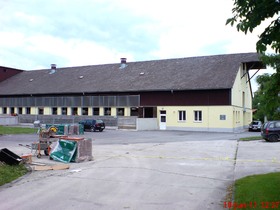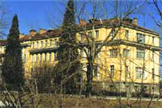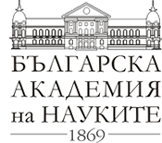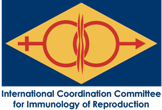ReProForce
FP7-REGPOT-2009-1
ReProForce logo
Slogun
REINFORCEMENT OF THE RESEARCH CAPACITY OF THE BULGARIAN INSTITUTE “BIOLOGY AND IMMUNOLOGY OF REPRODUCTION”
Events
- Jun 21, 2013
Information about the final meeting of ReProForce project participants /17-18 May 2013/
- May 10, 2013
Final meeting of ReProForce project
- Feb 28, 2013
Workshops of the ReProForce experts with business and scientific stakeholders in the IBIR-BAS
- Jan 30, 2013
Information for Open Doors Days in IBIR, BAS, November 29th – 30th 2012.
- Nov 14, 2012
Open Doors days – 2012
Mobility visit to a partner center in Vienna, Austria
Jul 28, 2011
Participants: assistant professor Kiril Shumkov
The name of the visited institution- Clinical Department of Reproduction and Animal Breeding, Biotechnology in Reproduction, University of Veterinary Medicine, Vienna, Austria - Dr.U. Besenfelder.
Duration: 06.06.2011 – 30.06.2011
Purpose of the visit – Exchange of experience on the topic: "In vitro production of bovine embryos."
The research program included:
1. The collection of bovine ovaries from slaughtered animals
Bovine ovaries were collected from slaughterhouse animals within 30 min of slaughter, placed into transport medium and delivered to the laboratory within 4 hours at room temperature.
Upon arrival in the laboratory, the ovaries were washed twice with fresh PBS. All antral follicles of approximately 2 to 8 mm in diameter were aspirated using 18-G needles and 5ml disposable syringes. Follicular fluid were collected in 50-ml Falcon tubes and kept at 38ºC in water bath. After 15-30 minutes oocytes sediment ware collected using a disposable plastic Pasteur pipette and transferred into square Petri dishes with grid. To this sediment was added the same amount follicular fluid for better visibility and bovine cumulus-oocyte complexes (COC) were selected under a stereomicroscope. These complexes were analyzed and only Class 1 and 2 (Leibfried and First, 1979) were selected for IVP (In vitro production).
2. In vitro production of bovine embryos
- In vitro maturation (IVM)
Collected bovine cumulus-oocyte complexes were washed twice with 2 ml with medium (modified Parker medium with estrous bovine serum) and once in 2 ml maturation medium (modified Parker medium with estrous bovine serum and follicle-stimulating hormone). Then 30 cumulus-oocyte complexes were transferred into four-well dish containing 400 ml of maturation medium and paraffin oil, and incubated at 39°C, and 5% CO2 and100% humidity .
- In vitro fertilization (IVF)
The self-migration (swim-up) technique described by Parrish et al. (1986) was used. Frozen semen simples from one ejaculate of a bull were thawed in a water bath at 38ºC for 10 sec. Semen fractions of 200 μl each were placed on the bottom of 10 ml conic tubes containing 1.6 ml of TALP (Tyrode's Albumin-Lactate-Pyruvate) Media. Tubes were kept at 39ºC in a water bath for 45min. The upper Talp-Sperm medium layer (~1.400ml) were transferred to new 10 ml conic tube and centrifuged 15 min at 200 x g. These supernatants were concentrated to the triplet volume of the pellet. Sperms were counted with the Neubauer chamber and sperm suspensions were prepared with final concentration 1 x 106 spermatozoa/ml.
Maturated oocytes were transferred into four-well dish containing 400 µl fertilization medium with 20 µl Heparin and were covered with an equal volume of mineral oil. Fertilization was performed using 1 x 106 spermatozoa/ml in the fertilization medium containing oocytes. The gametes were incubated for 20 to 22 h at the same conditions as maturation.
- In vitro cultivation
Presumptive zygotes were vortexed for 90 sec., thus zona pellucida was separated from cumulus cells. Zygotes were washed with 2 ml culture medium (CR1 medium containing estrous bovine serum, essential amino acids, Gentamycin). Embryos were cultured at 39°C, 5% CO2, 8% O2 and 100% humidity.
During this specialization two experiments were conducted. In the first experiment, 280 oocytes were isolated for in vitro maturation. They were divided into two groups of 140 oocytes each. The oocytes was selected after in vitro fertilization and divided into two study groups - group A - 131 zygotes, and group B - 128 zygotes . Two groups were cultured under different conditions: group A at 39ºС, 6% СО2 and 100% humidity , group B - 39°С, 8% О2 , 5% СО2 and 100% humidity. On the seventh day of culture, the number of blastocysts formed were counted in each group: group A – 18 blastocysts; group B - 36 blastocysts. On the ninth day the number of blastocysts were 46 blastocysts for group A; and 67 blastocysts for group B (including the hatched blastocysts). These results clearly highlight the advantages of cultivation of bovine embryos under conditions of low oxygen in the air. In the second experiment 300 oocytes in the same experimental setup were used. The results from the second experiment confirmed the first experiment results.
Персонализирано търсенеМрежата











